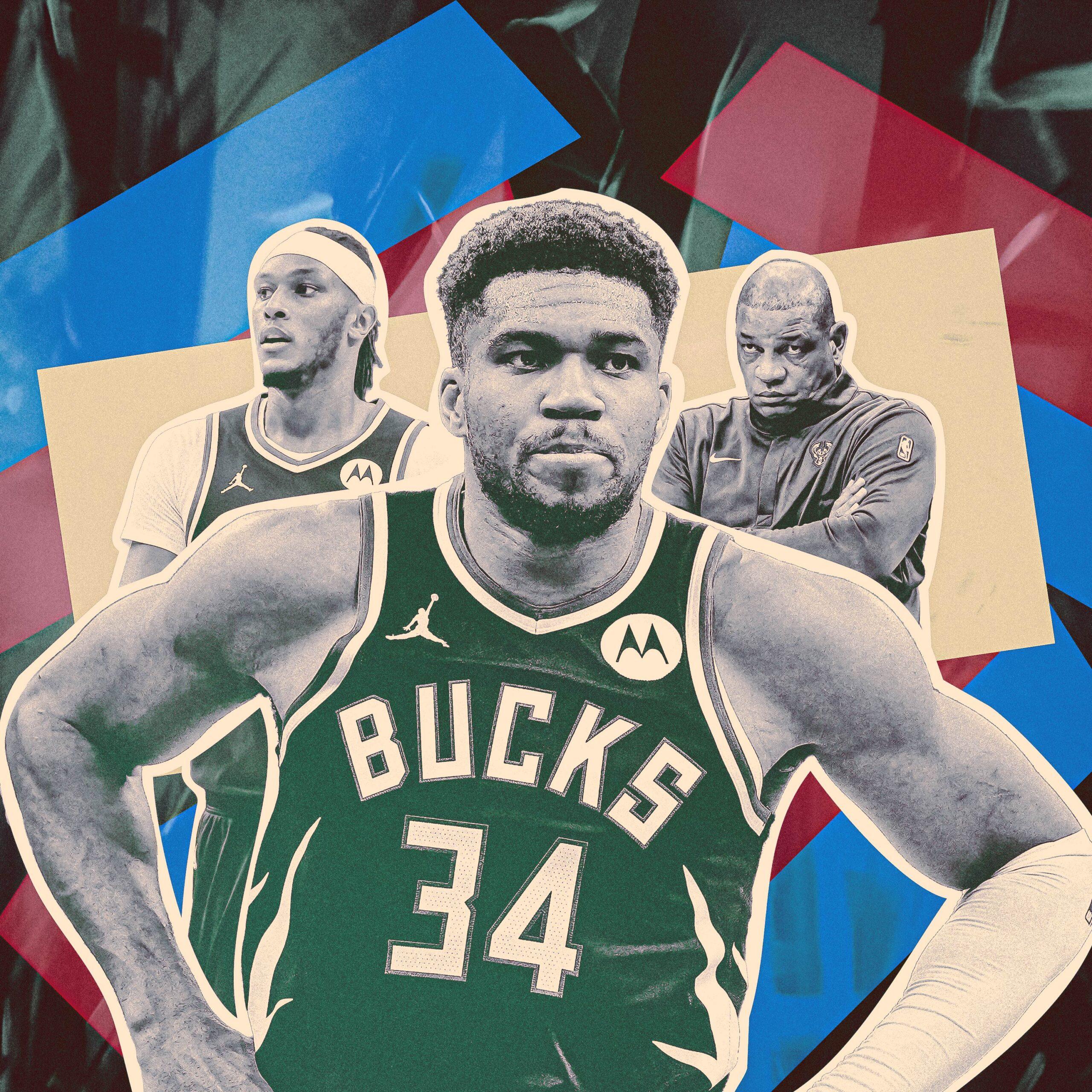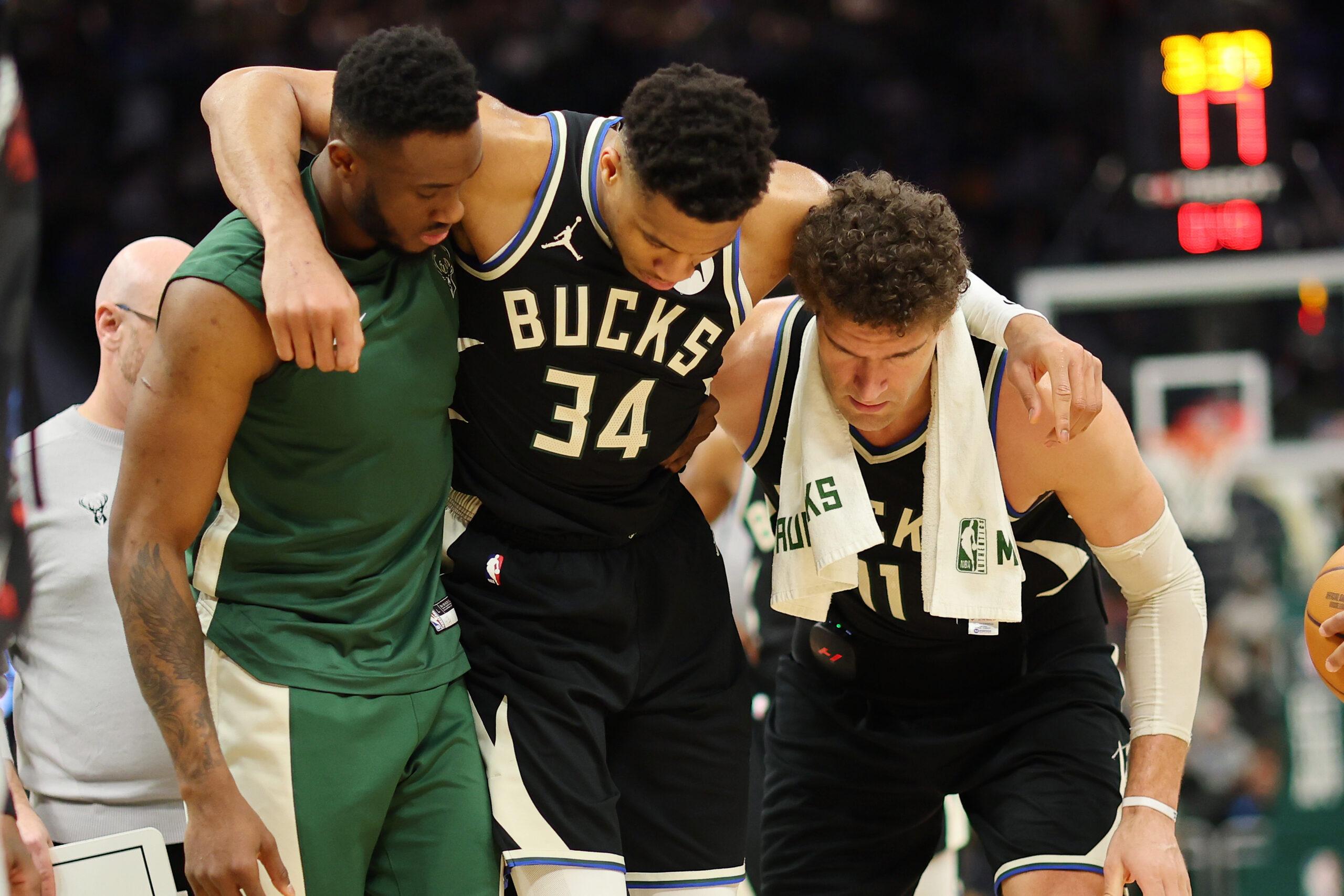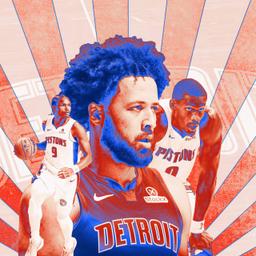
On his way to winning league MVP nine seasons ago, Russell Westbrook was blessed with a situation that encouraged the unflinching aggression that made him so great. It was the season after Kevin Durant moved to the Bay Area, and everything Westbrook could ever want was received with an enthusiastic “absolutely!” by a spurned Oklahoma City Thunder organization that was desperate to save face and appease its remaining franchise player.
Westbrook not only led the NBA in scoring and became the first player to average a triple-double in 55 years, but he finished with the highest usage rate in league history and an assist rate that’s only ever been topped by John Stockton. It was glorious, gluttonous production on a scale the NBA had never seen. Since winning a championship was no longer realistic for the Thunder, catering to Westbrook’s every whim became their goal.
Sound familiar?
Right now, Giannis Antetokounmpo—whose Milwaukee Bucks, for better and worse, currently exist to accentuate everything that makes him one of the most physically unstoppable basketball players of all time—is riding the same carousel.
Before he suffered a groin injury halfway through Monday night’s loss against the Cleveland Cavaliers that will reportedly sideline him for one to two weeks, Antetokounmpo’s per-game averages boggled the mind: 32.6 points, 11.3 rebounds, and 7.1 assists. His PER and true shooting percentage were at a career high, and he had attempted more than twice (!) as many shots at the rim as any other player in the league.

Giannis Antetokounmpo is helped off the court by Thanasis Antetokounmpo and Brook Lopez after suffering an injury during a game against the Boston Celtics
In an ideal world, Antetokounmpo would still have a healthy Damian Lillard (or, like, literally anyone who could sniff an All-Star appearance) as his running mate—but even if this roster wasn’t exactly Milwaukee’s Plan A, the decision to surround a furious wrecking ball with deadeye 3-point shooters is as straightforward as it is unfair.
The Bucks rank second in 3-point percentage, at 41.5 percent. Meanwhile, no player in the league has seen a greater improvement than Giannis in their half-court shot quality from last year to this one. (The average distance of Giannis’s field goal attempts are 5.8 feet from the rim—the closest he’s ever been to the hoop.) The roster-building strategy made enough sense on paper. When he’s on the court, it’s been damn near flawless.
But then you watch what happened in Cleveland, and you’re instantly reminded just how delicate this situation is.
I started writing this piece that morning. Even then, there were only a few ways Milwaukee’s season could go, and few, if any, had a happy ending. The first is some variation of Westbrook’s binge back in 2017, albeit with significantly more efficient production and way better on/off splits. (Westbrook’s on-off net differential was plus-12.5 points per 100 possessions. Today, Antetokounmpo’s is plus-21.1) In this hypothetical, he’d drag an otherwise hopeless Bucks team to the playoffs and win his third MVP.
In the best-case scenario, Milwaukee would do the seemingly impossible and follow the same footsteps that were laid out by the 2001 Philadelphia 76ers or 2018 Cleveland Cavaliers, a pair of conference champions that were built entirely around one logic-defying superstar.
This brings us to door number three, the nightmare end game where Antetokounmpo—who already has a sore knee and strained groin—can’t stay healthy and watches the Bucks stumble into the lottery.
Going back to the initial comparison in this piece, one key difference between Giannis and Westbrook is their age. Westbrook was 28 in 2017. Giannis turns 31 next month and has missed between 10-20 games every year since 2020. Superman’s kryptonite might actually just be the rigidity of an NBA schedule.
It’s anachronistic to watch Antetokounmpo shoulder such a heavy load and expect durability: His true usage rate (which expands upon regular usage rate by including more playmaking metrics and tracking data) is a career-high 62.1 percent. This ranks second in the league and is about 7 percentage points above where he finished last season. It’s an immense burden for someone whose skill set can’t be optimized without several violent collisions every game.
At what point does what’s good for Giannis contradict what’s best for the team? What is the on-court downside when everything a franchise does is geared to satisfy one person? Of course, the attention Giannis draws creates open shots for everyone else. But if/when the Bucks curdle into a below-average squad—their net rating currently reflects a 38-win team, and that’s with a relatively soft schedule so far—consider how monotonous life will eventually get for teammates who’re asked to tolerate so many thankless tasks while rarely getting to dribble the ball. Alas, the irony here is that none of them have shown they can handle a role that’s dramatically wider than what they were initially meant to fill.
Even with Ryan Rollins breaking out as an early candidate for Most Improved Player—dear lord, this dude is good—he’s miles away from becoming the primary sidekick on a contender, particularly when Myles Turner is the team’s second-highest-paid player. Today’s NBA requires every good team to deploy productive, multi-dimensional eighth, ninth, and 10th men. The Bucks don’t have that. (Kevin Porter Jr. may help when he’s back from his ankle injury. But you’re in deep trouble if “Kevin Porter Jr. may help” is a sentence being written about your basketball team.)
In every year since 2019, Milwaukee’s net rating has been above league average when Giannis is on the bench. That definitely isn’t the case this season. Check out this chart, courtesy of NBA Visuals:

Milwaukee’s rotation turns into a charcuterie of shit when it can’t revolve around the team’s best player. It didn’t take long for Doc Rivers to acknowledge just how perilous things can get when Giannis takes a seat: He tweaked his substitution pattern after a blowout loss against the Raptors just eight games into the season, shortening Antetokounmpo’s on-court stints and pockets of rest.
In the seven games before that, Giannis exited the game a little over halfway through the first quarter and then re-entered it a few minutes into the second quarter. Since, he’s subbed out a little earlier so he can come back in the game at the end of the first quarter and then stay on the floor at the start of the second quarter, an attempt by Rivers to mitigate the damage when his best player is not in the game.
To boot, the only team that deploys its starting five at a higher frequency than Milwaukee is the Denver Nuggets. Rivers started the season playing a unit sans Giannis that plugged Kyle Kuzma beside his other four starters (Rollins, AJ Green, Gary Trent Jr., and Turner), but that group was absolutely pounded on the glass and posted the fourth-worst offensive rating among all five-man units that have logged at least 100 possessions.
Rivers quickly shelved it by putting Kuzma—who seems to float through some stints with zero awareness of the score, clock, or city he’s in—in the starting lineup. In another tiny sample size, that group has been excellent despite Kuzma’s maddening inconsistencies. (There was one stretch in a game against the Hornets when he missed two straight layups and then had a third pinned against the glass by Ryan Kalkbrenner—a harsh reminder that Kuzma has a shorter wingspan than Bronny James.)
Turner was supposed to be a godsend addition, but his true shooting percentage with Giannis off the court is a whopping 15.7 percentage points lower than when Giannis is in the game. Only 20 percent of Turner’s field goal attempts are coming at the rim and he’s only making 45 percent of his 2-point shots. Both are career-low marks by a wide margin. The days of Turner getting spoon-fed easy looks at the basket in Indy are over. Last season, 93 percent of his mid-range baskets were assisted. This year, that number is down to 64 percent. Tyrese Haliburton is not walking through that door.
With this roster, it’ll be tough to find any lineup combination without Giannis that is able to attack north-south, put pressure on the rim, and get to the free throw line. If he ever goes down for a longer stretch, the Bucks will basically have to fix a defective plane as it cruises 35,000 feet in the air.
The stakes are high. Antetokounmpo's happiness, Milwaukee’s desperation, and the permeable definition of loyalty when it’s applied to professional sports, are taut concentric circles around a neverending saga. Its tension is felt in an NBA that’s waiting to see if things fizzle or combust.
The Bucks can make trades to improve their roster, with a 2031 first-round pick, four pick swaps, and several contracts to throw around. But another win-now transaction would solely be done to satisfy Antetokounmpo. The juice is simply not worth the squeeze. With him healthy and dominant, the Bucks rank 22nd in defensive rating, 30th in rebound rate, and 29th in free throw differential.
Giannis’s mere presence is a kind of determined optimism. He forces defenses to abandon NBA norms and reorient baseline principles. Suddenly, helping off the strongside corner is a requirement and pursuing proper floor balance is done with do-or-die focus. Plays that feel on the verge of going DOA are resuscitated by a swooping layup, molar-loosening dunk, or unexpected lurch into the paint that can’t be stopped without a helpless defender hacking into his body.
For the Bucks to right their ship, they need to find a way to compete when that isn’t available. It’s a challenge of epic proportions. It’s also what they signed up for.





